A Walking Tour in Athens – History of Rebellion
Three days in Athens at the end of a hectic itinerary is always the icing on the cake, in fact for me, it has become a ritual. Whilst here I always try to do or see something new. I’d seen a walking tour advertised called Athens, a History of Rebellion which really piqued my interest. This was booked before I left Alexandroupolis but little did I know that I’d pick up a lurgy along the way.
Last night I went through the shivers and then the sweats. This morning my head feels like it is going to explode and I look frightful! I’m made of strong stuff and it takes a lot to knock me down. Stoicism is my middle name. I dose myself up with Lemsip, don a mask and head out to the meeting place in Monastiraki Square.
Our guide is called Maelle. As she takes our names and ticks us off her list she notices I look sick. I promised her I’d try not to die during the tour. It’s going to be a challenge!
Our first point of interest is the Tzistarakis Mosque, a popular landmark in Monastiraki Square. It was built in 1759 during the time of the Ottoman occupation by the governor of Athens Mustapha Agha Tzistarakis. The story goes that during its construction he ordered that one of the pillars (probably from the Temple of Olympian Zeus or maybe Hadrian’s Library) be demolished and ground up to make lime. This would be used to whiten the walls of the outer building.
Legend says that anyone who destroys a sacred building will feel the wrath of the Gods. A year later a terrible plague struck Athens without prejudice killing both Greeks and Ottomans alike. One fateful night Tzistarakis was murdered, by who or what, nobody knows but since his demise the plague began to die out.
Since the end of the Ottoman occupation, the mosque has taken on many uses including a barracks, a prison and a storeroom. During the Greek War of Independence, it became a gathering place for the Greek elders. Today it houses the Museum of Greek Folk Art.
We next walk down Ermou where we come across the tiny Church of Agia Dynamis. Although small in size, you can’t fail to miss it with its peculiar juxtaposition to the Electra Metropolis Hotel. The church was built in the 16th Century and is said to be the protector of pregnant women.
During the Greek War of Independence, Greek citizens were made to manufacture bullets for the Ottomans from inside the church. The first act of rebellion was by the munition workers who syphoned off a proportion of the bullets for the Greek revolutionaries, sneaking them out in refuse bags during nightfall.
The second act of rebellion was the refusal to let the church be demolished for redevelopment. After the Greek War of Independence, King Otto’s vision was to modernise Athens and make it a modern city to be envied. Several attempts were made to procure the land but the Orthodox Church refused to surrender it. The decision was made to build around it, first as a municipal building that was later developed into the Electra Metropolis Hotel.
We continue down Ermou until we arrive at Syntagma Square. Not only is this a destination to observe the changing of the guard, but it has also been the epicentre of protest. Of course, this isn’t a new phenomenon.
In 1836 as part of King Otto’s plans to re-build Athens, the neo-classical parliament building and the square were constructed. Eventually, Greeks became tired of his autocratic rule and in 1843 an uprising took place. This forced King Otto to implement a constitutional government. The square was given the name Syntagma which means constitution in modern Greek.
I have seen several protests take place in Athens, thankfully I haven’t been caught up in any that have turned violent. In the UK as we see our freedom and right to protest being gradually eroded, it makes you appreciate the meaning of democracy. Below is a photograph that I took during a protest in Syntagma Square last year.
From Syntagma Square we walk to Panepistomou Street, tracing my steps from the day before. The great thing about taking a guided tour is there are so many things brought to your attention that you may never have noticed before. We arrive at the gates of the Numismatic Museum which houses a vast collection of coins, medals and precious gems making this collection one of the most valuable in the world. The mansion was built for German businessman and amateur archaeologist Henry Schliemann. He commissioned Greek German architect Ziller to design and construct it and was completed in 1880.
We are not here to visit the museum but to look at the unusually decorated iron gates. The gates are adorned with sphynxes with the body of a lion, wings and a woman’s head. In Greek tradition, the sphinx was a cruel and merciless creature. Anyone who crossed her path would be challenged with a riddle. If the incorrect answer was given they would meet a grizzly end. Anyway, that’s not the interesting thing about the gates. It’s the border of what we would identify as swastikas.
As we know the swastika was adopted as the symbol for the Nazis and this is what most people would recognise it as. However, this symbol has been used since ancient times from the Hindus to the Jains. Schliemann himself saw representations of the symbol in Troy during some of his archaeological expeditions. He wanted to bring as many elements of ancient Greek history into his new home as possible. Not only is the symbol adorning the gates, but we are told it features on the mosaic floor inside. This museum is definitely going on my list for my next visit!
We are now heading for Kolonaki and take a turn down a side street which takes us past the bust of a woman called Aspasia. Aspasia was born in Asia Minor and was an educated and skilled courtesan to Pericles an influential politician in the 5th century BC. Aspasia had great influence over Pericles and was often slandered out of jealousy. As she didn’t have married status (which would have confined her to the house), she was free to socialise and attend symposiums. Here she would learn about the political views being discussed and all would be reported back to Pericles. Such was her skill in rhetoric, she taught others and notably, much was written about her – although not all favourable. If she were alive today she’d probably be known as an Influencer!
Just beyond the bust of Aspasia is the Athens School of Law where we get our first taste of modern Athens rebellion. When I first saw the writing saying F*** Cleaning, I thought – wow – these are my people! Maelle explained further. Exarchia has long been the centre of rebellion and home to anarchists. The cleaning refers to the authority’s endeavours to cleanse the neighbourhood. For several years they have implemented a plan to evict the existing community and gradually gentrify the area, making it an extension of neighbouring upmarket Kolonaki. This is where we head to next.
We are now in the midst of the upmarket area of Kolonaki with its trendy boutiques and boujie restaurants. We don’t stay for very long but it serves to show the contrast to what we were about to see in Exarchia, the heart of Athens’s story of rebellion. Exarchia has been central to the campaign for counterculture and resistance since the 1970’s.
We arrive at Navarino Park. The space was originally a car park but in 2008 the municipality issued plans to re-develop the land provoking outrage in the local community. A digital battle cry went out calling for collective action against the authorities. The community descended on the old car park and proclaimed that the space would be protected. It then saw a mass effort of guerilla gardening that turned the concrete land into a rich and verdant community park. The ethos of Navarino Park is that it was to function as a space to create, to exchange ideas, to stand up for the rights of the community and would provide free access to all. No profit would be made from this resource and it would be self-sustained by the community.
Maelle invites us to look at the large mural on the side of the building. The image represents the ethos and everything that the community and the park stand for. Underneath are the very poignant words “and what didn’t you do to bury me, but you forgot that I was a seed.” The couplet is associated with Thessaloniki-born poet Dinos Christianopoulos but its sentiment has been adopted across the globe.
Maelle tells us that the park is still not safe from the clutches of the authorities. There are still plans to redevelop the site but the community remains vigilant. We are told that the police are often antagonistic and make life as difficult as possible for the remaining residents. Police squads and armoured vehicles still patrol the area as part of a plan to squeeze out the last remaining rebels.
2008 was the year of the riots that spread across Greece triggered by the fatal shooting in Exarchia of 15 year old student Alexandros Grigoropoulos. Greece was in the middle of the economic crisis and deep frustration and anger with the government had been simmering for some time. The death of Alexandros resulted in the escalation of widespread riots which involved violent clashes with the police. The sense of anger is still very much ever-present. This can be seen in the graffiti and memorial dedicated to Alexandros on the spot where he died. It was unveiled by the Anarchist Initiative against the State Murders.
There are part of Exarchia that reminds me of Christiania in Copenhagen which I visited some years ago. The big difference is that pain and anger is still very much evident here in Exarchia.
As we make our way to our final place of rebellion, we pass another significant contribution of street art to the memory of Alexandros Grigoropoulos. This was created by a collective known as Political Stencil.
Artist iNO’s 2014 mural called Wake Up depicts an image of God clasping a dead man’s hand which ultimately brings him back to life. The meaning behind it warns of the evil of letting money and greed become your god.
One of the most emotive pieces of art is WD’s 2015 work entitled No Land for the Poor. The artwork was created in 2015 at the time of the referendum on the bailout deal. It portrays the plight of the forgotten and the faceless people that fell through the cracks of society.
A short walk away we are now at our final destination, the Athens Polytechnic, the site of the 1973 uprising. For nearly 7 years Greece had been under the dictatorship of the military Junta. The regime was brutal and authoritative. Any dissent was met with torture and/or exile. (written about during my stay on Agios Efstratios). An amateur radio station was rigged up and called for Athenians to come and join the protests. Over several days hundreds of people joined the demonstrators. On one fateful evening, a gathering of the students met at the Law School and demonstrations progressed to the Polytechnic.
The crowds chanted a slogan “Bread, education, freedom”. Referencing a poem by Dionysios Solomos the students called themselves the Free Besieged. During the early hours of the morning, a tank arrived at the gates of the Polytechnic as an act of intimidation. The students were commanded to leave the premises and disperse but they were steadfast. As tensions heightened shots were fired and the tank was driven into the iron gates. Around 40 people were killed and hundreds injured.
This tragic event was the beginning of the end of the dictatorship in Greece. We are all mindful that in several weeks time it will be the 50th anniversary of this tragic event. For now, we look upon the memorial and the remains of the rusting iron gates and reflect upon the sacrifices made by the few for the many.
I highly recommend this walking tour with Maelle. You can book this tour directly with Culture Hunters or via Get Your Guide.



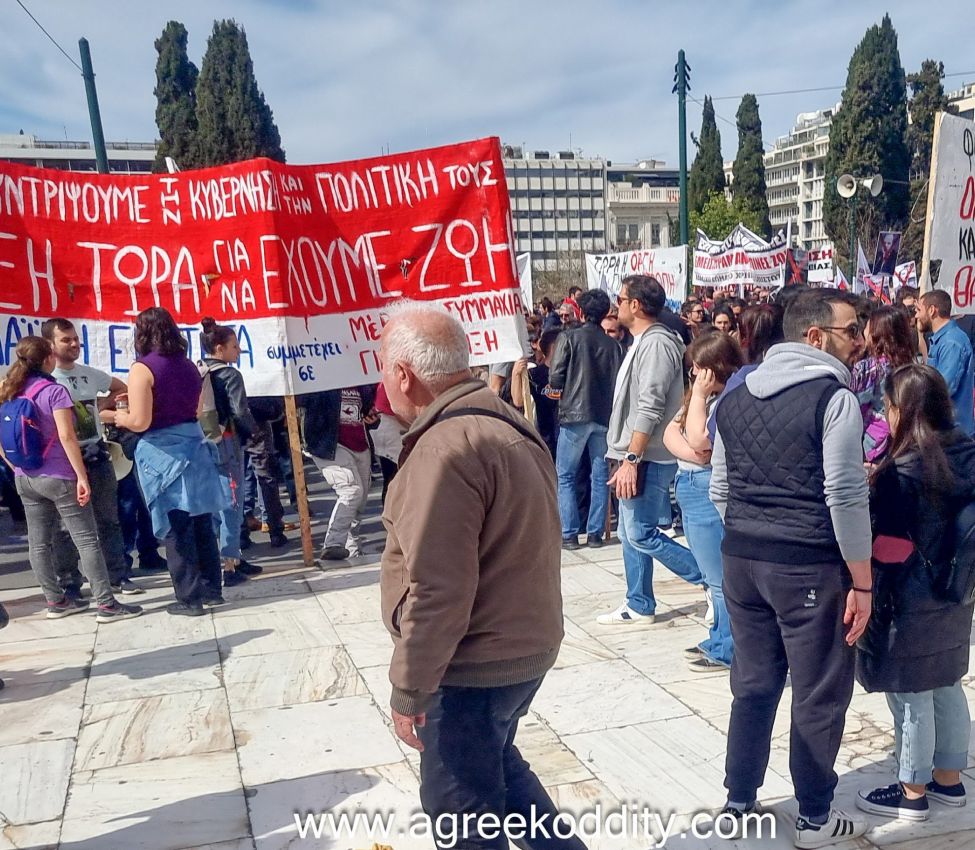
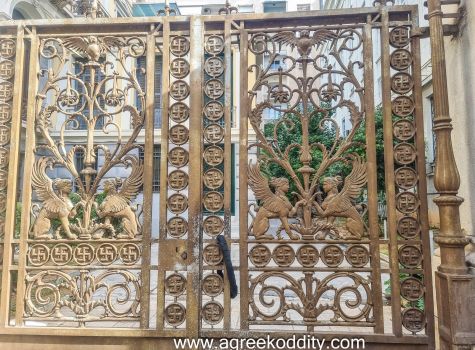
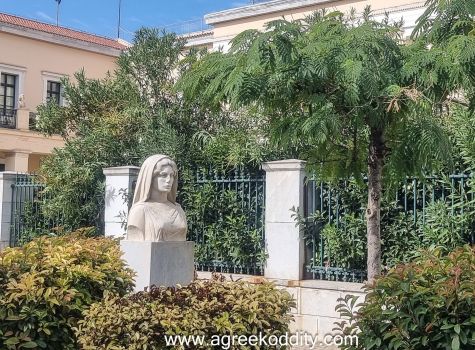


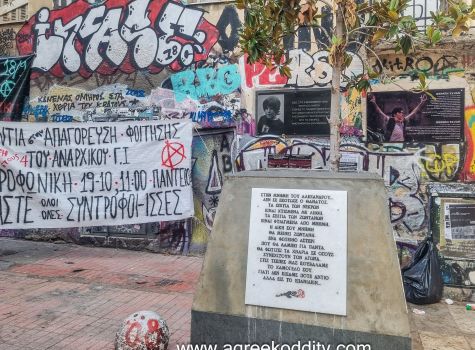


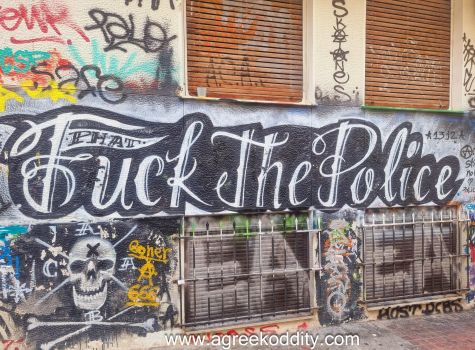
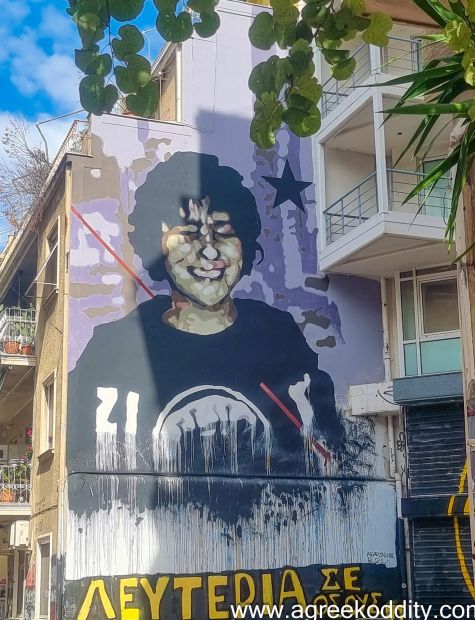
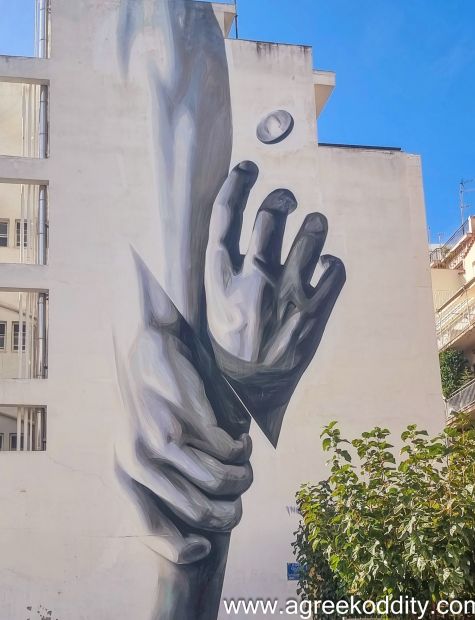
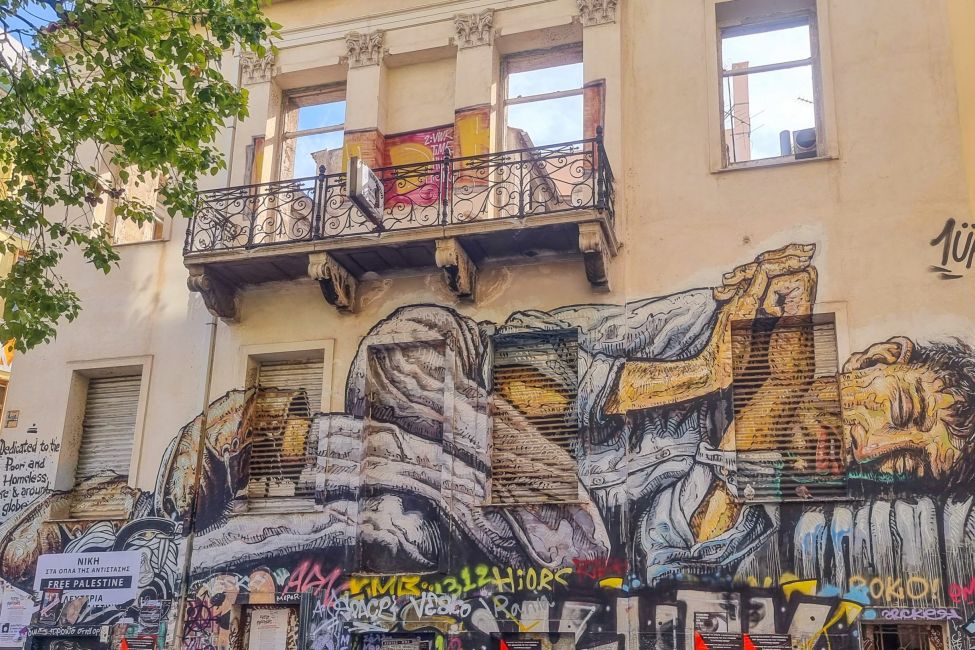
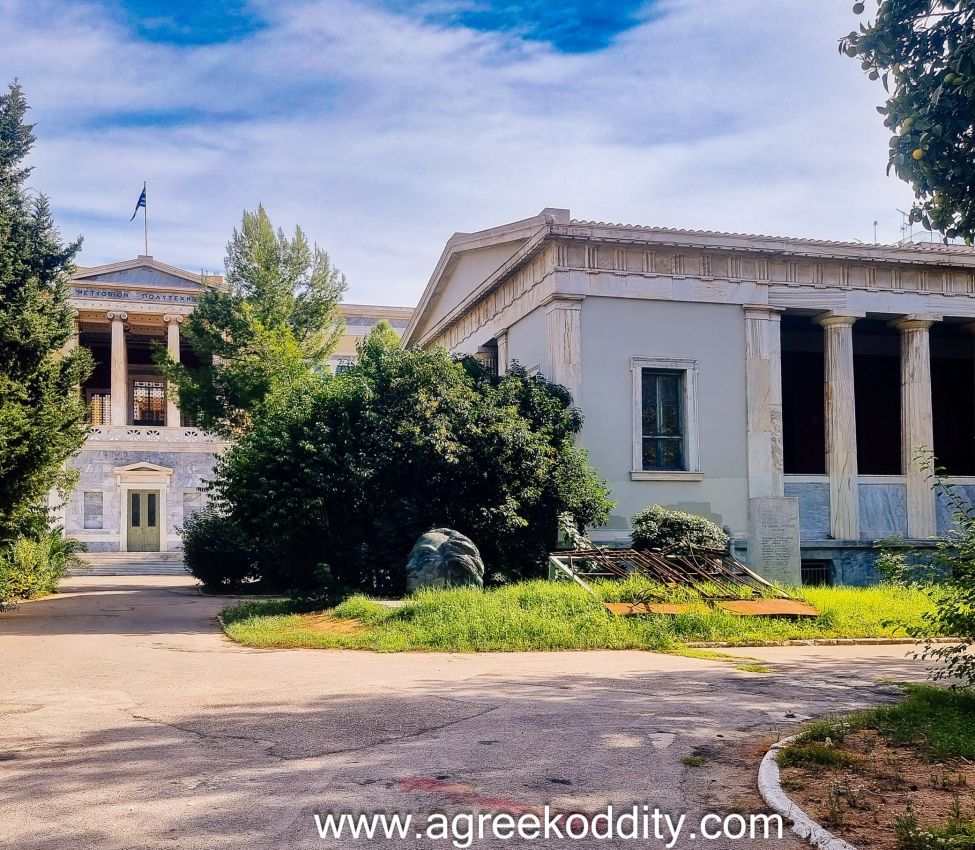






Very interesting Stephanie, I was aware of some of this history but not all of it. I will visit Athens when I can tear myself away from the islands!
Hi Liz
You could spend a year in Athens and not see everything that it has to offer! ❤️❤️❤️